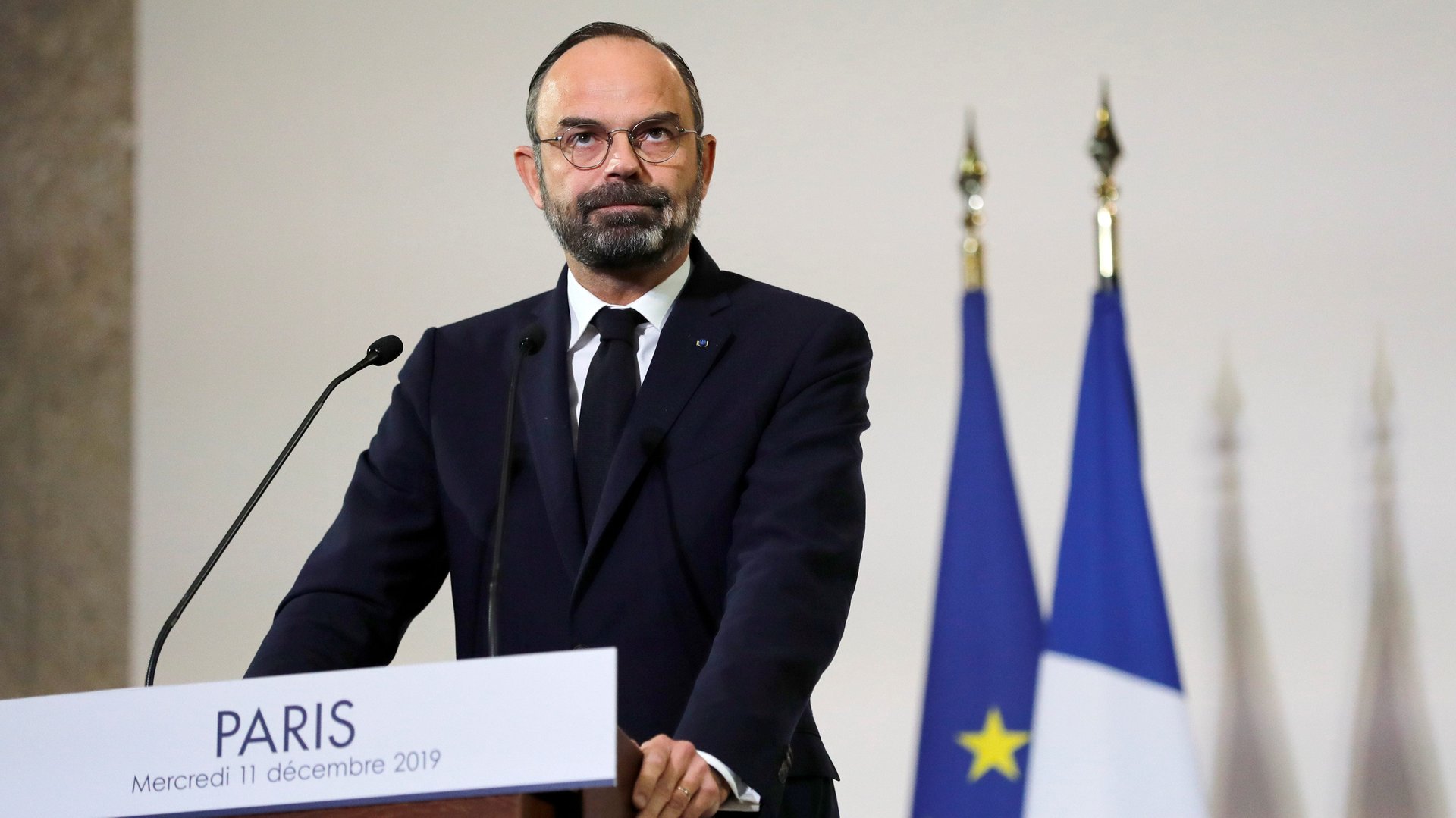The “warlike semantics” of reforming France’s convoluted pension system
French workers have been on strike for a week in protest against a government proposal to reform the country’s convoluted pension system. On Dec. 5, trade unions called for a nationwide strike that has since shut down public transport and schools across France.


French workers have been on strike for a week in protest against a government proposal to reform the country’s convoluted pension system. On Dec. 5, trade unions called for a nationwide strike that has since shut down public transport and schools across France.
Prime minister Edouard Philippe unveiled the details of the changes yesterday at a speech in Paris.
“To put an end to the warlike semantics, I would like to say that this reform is not a battle,” he said (link in French). “The question is not whether the government will hold strong, whether the unions will win. There will be no winners, no losers. We want the French people to keep their heads high and to gather around the principles of universality, equity, and responsibility.”
What’s the deal with France’s pension system?
France’s pension system is one of the most generous (pdf) in the world. Public and private employees contribute to their pension funds until they retire and collect a state pension after turning 62 (pdf), or after working for 41-and-a-half years. In 2017, the average French retiree’s pension was €1,496 ($1,659) per month before tax (pdf, in French). But there are 42 “special” categories of workers, including notaries, teachers, and ballet dancers, who benefit from different pension schemes and can retire earlier.
This system was initially developed after World War II to support people with physically arduous jobs, like sailors and public utility workers. Some unions negotiated with the government of then-president Charles de Gaulle for the professions they represented to be allowed to control their own pension schemes.
But as the population of France has aged and birth rates fallen, experts say the current system is not financially viable. A landmark report (link in French) commissioned by the government and published last month showed that the system will experience a deficit ranging from €7.9 to €17.2 billion ($8.8 to $19.1 billion) by 2025. Currently, France spends around 14% of GDP on pensions, one of the highest shares in the developed world. It’s the country’s largest social expenditure.
French president Emmanuel Macron pledged to overhaul the country’s pension system while campaigning in 2017, like many other exasperated presidential candidates before him. The scale of the protests against the changes to pensions, on top of ongoing “yellow vest” protests and the public airing of grievances by other groups, presents a strong challenge to his presidency.
What’s in the pension reforms?
To simplify the system and keep the deficit in check, the government wants to encourage people to work longer and implement a universal points-based pension system. Under this system, which is similar to the ones in countries like Norway and Sweden (pdf), all workers will earn points for every year that they work, and cash them in upon retirement.
In a speech that was at times conciliatory and at others firm, Philippe said that the new pension system, which will not affect older workers or a certain set of professions, will go into effect in 2022. The legal retirement age of 62 will not change, but workers will be incentivized to work until 64 through a system of bonuses and discounts.
Under the government’s plan, the new system will not apply to workers who are currently within 17 years of retiring, and will have a limited impact on people in the middle of their careers. The first group who will work their whole lives under the new pension system are people born in or after 2004. For those already in the workforce, only the years after 2025 will be affected.
While the government made concessions to unions in its plan, many were quick to denounce the proposals. They have called for more protests (link in French), deepening the country’s winter of discontent.